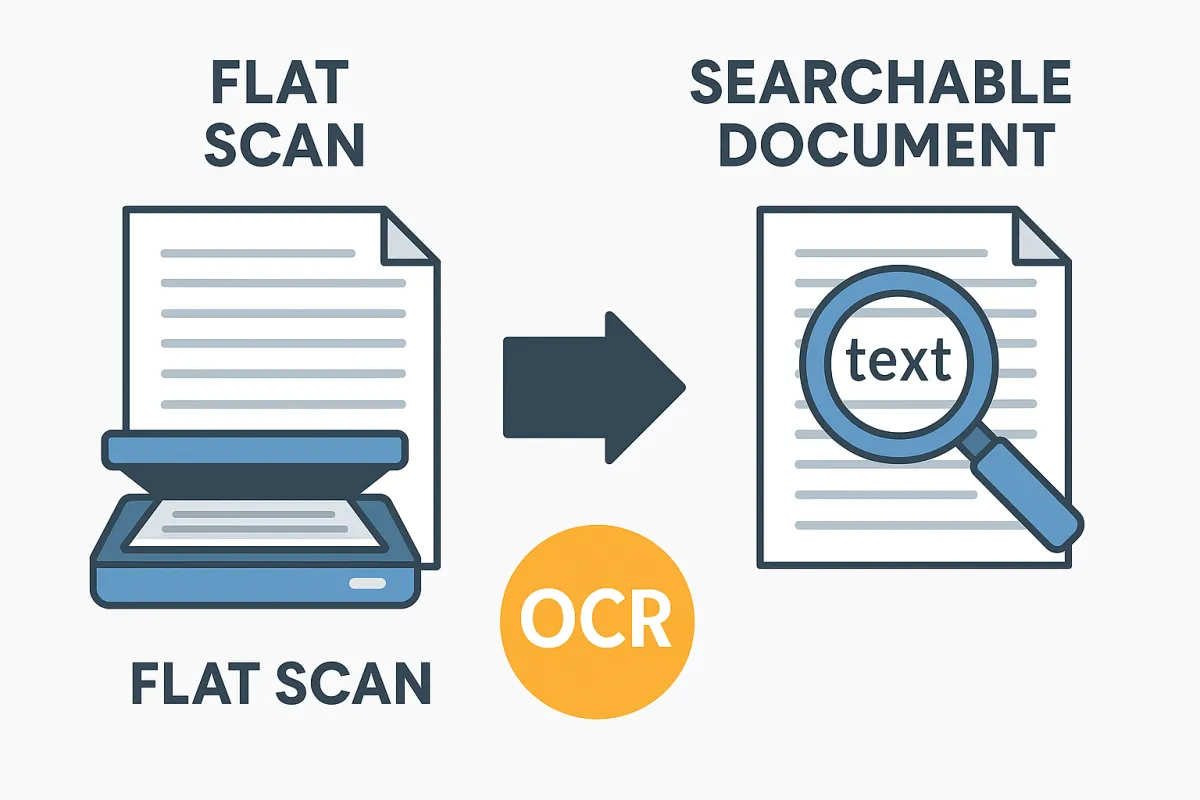
Unlocking the Power of OCR: Why Searchable Documents Change Everything
By: USA IMAGING, Inc.
Scanning paper records into digital format is a big leap forward for any business. You eliminate the clutter, reduce storage costs, and create a secure archive. But here’s the secret most companies don’t realize—not all digital files are created equal.
If your scanned documents are just “flat images,” you may still be stuck flipping through digital pages the same way you once shuffled through filing cabinets. That’s where OCR—Optical Character Recognition—steps in and changes the game.
What Is OCR, Exactly?
OCR is the process of analyzing a scanned image and converting the text it “sees” into machine-readable data. In other words, it turns pictures of words into searchable, editable, usable text.
Without OCR:
A scanned contract is just a picture of a contract.
You can’t search for keywords inside it.
You can’t copy text out of it.
Your staff has to scroll page by page to find what they need.
With OCR:
That same contract is now searchable.
Type in “renewal date” or “client name,” and it pops up instantly.
Information inside the document can integrate with other business systems.
Why OCR Is a Game-Changer for Businesses
1. Searchability = Time Saved
Think about the hours wasted searching for one file. Now multiply that across an entire department, month after month. OCR makes every scanned document searchable, allowing staff to locate a single phrase, number, or name in seconds.
For example, an attorney looking for a precedent in thousands of case files can type a keyword and instantly access the right document.
2. Better Workflow Integration
Once OCR turns text into machine-readable data, it can be integrated into your existing workflows. That means:
Contracts automatically linked to client accounts.
Invoices routed directly into accounting software.
Patient files tied into electronic health record systems.
OCR bridges the gap between “digital archives” and “actionable business tools.”
3. Automation Opportunities
OCR opens the door to automation. Imagine:
Automatically flagging overdue invoices.
Creating alerts when contract dates approach.
Pulling data from scanned forms into spreadsheets without retyping.
This not only saves time but also reduces human error, which can be costly in industries like healthcare, finance, and law.
4. Compliance and Risk Management
For industries that are heavily regulated—healthcare (HIPAA), legal, financial—OCR adds another layer of security and compliance. Searchable text makes it easier to respond to audits, track access, and ensure sensitive information is properly managed.
And in case of legal disputes, having fully searchable records ensures nothing slips through the cracks.
5. Future-Proofing Your Archive
Think of OCR as an investment. Technology evolves, but searchable text will always be more valuable than flat images. Even as AI tools advance, OCR ensures your documents are structured in a way that allows future systems to analyze and process them.
A Real-Life Example
We worked with a local engineering firm that had thousands of oversized project drawings and reports stored as flat scans. Whenever they needed to find specific details—like zoning codes or material specs—staff wasted hours combing through files.
After applying OCR, those same files became instantly searchable. Now, typing in a phrase pulls up exactly the page they need—saving hours every week and making project deadlines far less stressful.
OCR Is No Longer Optional
In today’s world, simply scanning documents isn’t enough. OCR is what turns a digital archive into a business intelligence tool. It transforms how your organization retrieves, shares, and uses information.
If your business is serious about efficiency, compliance, and future growth, OCR isn’t just a “nice to have”—it’s essential.
📞 Contact Us: 858-513-6565
📩 Request a Quote: Click Here
